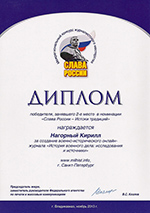Napoléon’s Paper Veterans – Petits Soldats de Strasbourg
– Third, by artists who commissioned printers to run off their drawings
Example: this is the most definitely the Würtz family, who completed his “Napoleonic” collection somewhere between 1825 and 1840 (or by 1855, according to other sources). They are very pretty, but despite E. Ryan claim that they are “the most accurate and complete depiction of the troops of the First Empire, Guy Dempsey asserts that they still should be regarded as secondary source for they were completed decades after actual events. Next, it is also problematic that each unit of soldiers with all possible ranks and types of soldiers (drummers, officers, voltigeurs, etc). Since it is extremely rare to find such completeness in primary source depictions of Napoleonic soldiers, it is possible that Wurtz was tempted to fill in gaps in his arrays based on theory and inference rather than on concrete information about uniforms actually worn. Finally, since the soldiers not accompanied by any notes of the artist, it is impossible to say for sure which sources were consulted.
On 1 October 1899, the major of medicine, Würtz, presented this collection (19 000) of his forefather as a gift to the newly organized Musée de l’Armée; they were placed on display in 1938 and are there ever since. Each foot soldier is approx. 10 cm high.

Würtz. 1er régiment d’éclaireurs (1813-1814): escadron de la Vieille Garde et escadron de la Jeune Garde, 2e régiment d’éclaireurs (1813-1814) et 3e régiment d’éclaireurs (1813-1814)

Wurtz. 3e régiment étrangers, vers 1811 (ex régiment Irlandais)
Fourrier compagnie de carabiniers, porte-drapeau, fourrier compagnie de voltigeurs et fourrier compagnie de chasseurs

Wurtz. 9e régiment d’infanterie de Ligne, 1809-1810.

Other producers:
Gustave Adolphe Henri Silbermann (? – 1870), was the first printer/editor to popularize paper soldiers on a major scale. His greatest contribution to the art of the paper soldiers was his development of a process for printing with oil colors. He began printing sheets of soldiers by 1845 starting with two sheets of First Empire line infantry (other 28 were dedicated to the Second Republic and Second Empire). Practically all his sheets were published in both colored and black-and-white versions.
Theodoré Carl (1837-1904) who specialized in the First Empire, designed his own figures which were then printed various publishing houses. He produced nearly 10 000 figures, which are now on display at the Strasburg Museum of History.

Drawings after Carl’s original paper soldiers: Grenadiers et Chasseurs à pied dela GardeImpériale(1804-1814). Catalogue of theStrasbourgMuseumof history by Darbou (around late 1960s)

Modern drawings of Theodor Carl’s soldiers based on the catalogue composed by Darbou
Plate 1. Grenadiers et Chasseurs à pied dela GardeImpériale(1804-1814)




